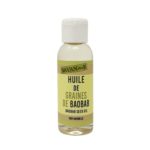History of the use of turmeric in phytotherapy: Turmeric, and more specifically its rhizome (the underground part), has been used not only as a food spice, but also as a medicinal plant since time immemorial in China and India. Traces of it can be found in Sanskrit writings dating back to 4000 BC! Turmeric is also one of the essential elements of Ayurvedic medicine. Traditional medicines in China, Thailand and Indonesia have also used it for centuries to stimulate digestion and treat related disorders. Turmeric arrived in Europe at the same time as the curries brought back by the British from their Indian Empire. Recognition of its medicinal properties is therefore recent in the West. However, its effectiveness in treating digestive disorders has been recognised by the World Health Organisation (WHO) and Commission E, the German scientific commission responsible for validating the medicinal properties of plants. The history of turmeric is also being written in the future, as a great deal of scientific research is underway, particularly into the effects of one of its main components, curcumin, in the prevention and treatment of certain cancers.
Powerful stimulant: turmeric combats gastric acidity by stimulating mucus secretion; it protects the stomach (particularly against peptic ulcers) and liver, and reduces nausea.
Anti-inflammatory: thanks to curcumin, the rhizome cures intestinal inflammation and limits painful attacks in the case of ulcerative colitis. Curcumin is also effective against gastritis, pancreatitis and rheumatoid arthritis, and is useful for post-operative oedema. Blood thinner: turmeric helps treat circulatory problems and, as a result, reduces the risk of stroke and heart attack. Antioxidant: turmeric is used to prevent cell ageing. For external use. Antibacterial and anti-inflammatory, turmeric can be applied as a poultice to treat conditions such as eczema, psoriasis and fungal infections. Usual therapeutic indications.
Digestive problems: dyspepsia, stomach ache, nausea, loss of appetite, heaviness and bloating. Protects the stomach and liver. Pain associated with intestinal inflammation, ulcerative colitis, rheumatoid arthritis or pancreatitis. Dermatological problems: eczema, mycosis, psoriasis. Other proven therapeutic indications. Prevention of cell ageing, circulatory problems, menstrual pain. In powder form, daily consumption of turmeric can vary between 1.5 and 3 g, or about the equivalent of a teaspoon. An infusion is prepared in ten to fifteen minutes with 1.5 or 2 g of turmeric infused in 150 ml of boiling water. Two cups a day are recommended.










Reviews
There are no reviews yet.